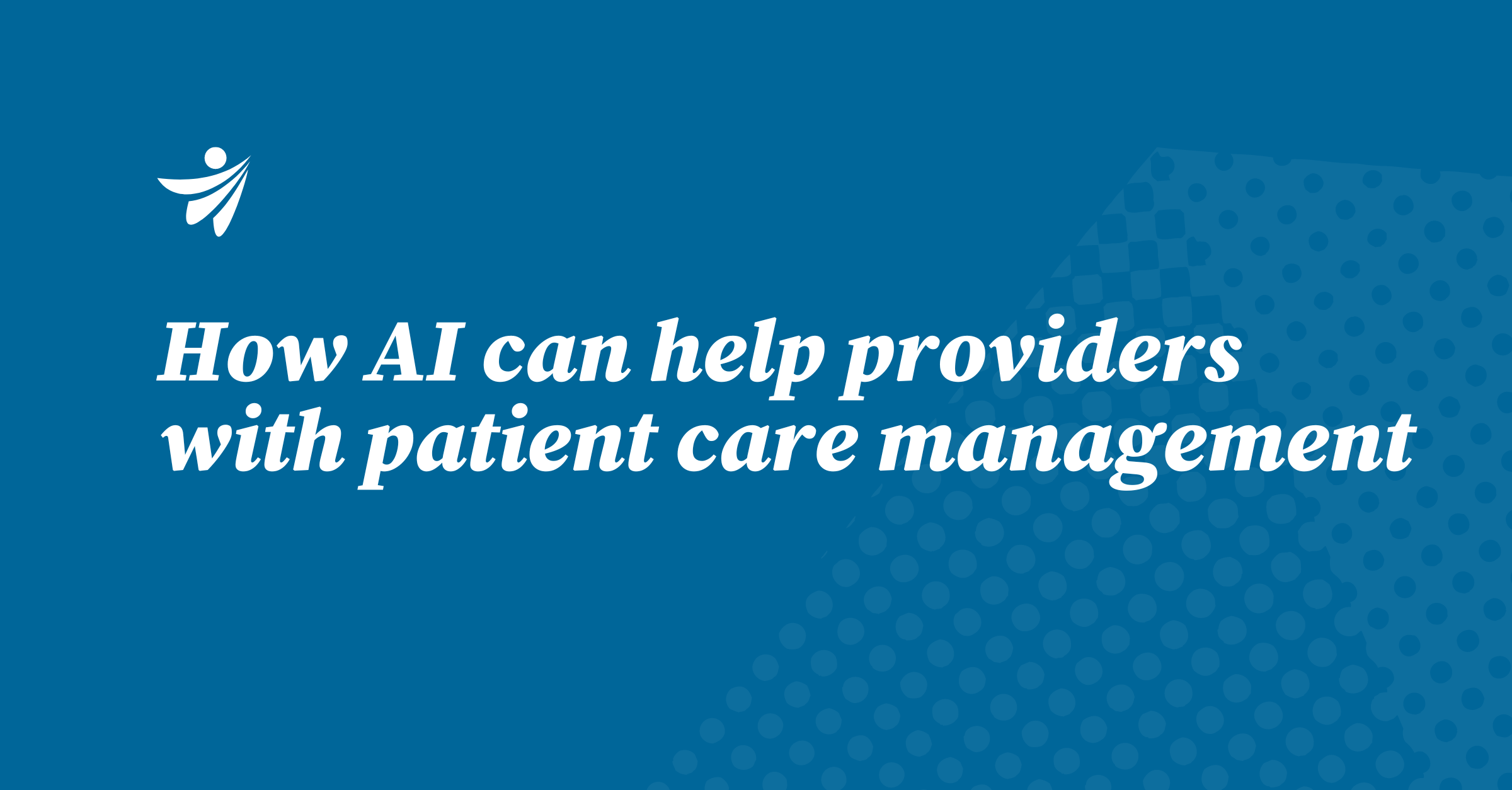
Insights for Providers
May 25, 2024
Insights for Providers | May 16, 2024
Chief Strategy Officers (CSOs) for health systems face the constant challenge of finding new revenue streams to cover the increasing costs of high-quality healthcare. To help tackle the problem, they are turning to predictive analytics for deep insights that can drive strategic decisions and open new revenue channels. By leveraging predictive analytics, CSOs can identify under-served areas, develop new service lines, enhance telemedicine offerings, and foster partnerships and collaborative ventures, ultimately helping health systems grow and thrive. Predictive analytics can help CSOs pinpoint geographic and demographic segments that lack adequate healthcare services. By analyzing demographic data, health statistics, and socio–economic indicators, predictive models can highlight areas where demand for healthcare services is not being met. For instance, an analysis might reveal that a certain rural area has a high incidence of chronic illnesses but limited access to healthcare facilities. Recognizing this gap, a health system could establish a new clinic or introduce mobile health units to serve this population. This strategic move addresses a critical healthcare need and opens a new revenue stream by tapping into an underserved market. Additionally, predictive analytics can help CSOs understand the specific health needs of different demographic groups. For example, an aging population might require more geriatric care services, while a younger, tech-savvy demographic might benefit from digital health solutions. By tailoring services to meet the unique needs of these groups, health systems can attract more patients and increase revenue. Another significant advantage of predictive analytics is its ability to identify emerging health trends and patient needs. By analyzing patient data, health trends, and lifestyle factors, predictive models can forecast future healthcare demands. This foresight enables CSOs to develop new service lines that address these unmet needs. For instance, if predictive analytics indicate a rising trend in chronic diseases such as diabetes or hypertension, a health system might invest in specialized clinics focusing on lifestyle management and preventive care. These clinics could offer services like nutrition counseling, fitness programs, and stress management workshops, which go beyond traditional medical treatments. By offering comprehensive care that addresses the root causes of chronic diseases, health systems can attract more patients and generate additional revenue. Furthermore, predictive analytics can help identify niche markets for specialized services. For example, a surge in mental health issues among teenagers might prompt the development of a dedicated mental health facility for adolescents. By addressing these specific needs, health systems can differentiate themselves from competitors and create new revenue opportunities. Telemedicine has become an integral part of modern healthcare, and predictive analytics can play a crucial role in optimizing its implementation. By analyzing patient data, health systems can identify populations that would benefit most from telemedicine services. For example, patients with chronic conditions who require frequent follow-ups can be excellent candidates for telemedicine. Predictive analytics can help CSOs identify these patients and develop targeted telemedicine programs that cater to their needs. This not only enhances patient care but also opens new billing opportunities. Moreover, telemedicine can help reduce hospital readmissions, which are often costly and subject to penalties. Predictive models can identify patients at high risk of readmission and ensure they receive timely follow-ups and remote monitoring through telemedicine. By reducing readmission rates, health systems can avoid penalties and improve overall care efficiency, contributing to revenue growth. Predictive analytics can also uncover opportunities for partnerships and collaborative ventures. By analyzing data trends and health outcomes, CSOs can identify potential areas for collaboration with pharmaceutical companies, technology firms, or other healthcare providers. For instance, a predictive model might highlight a growing need for advanced diagnostic tools for a particular disease. This insight could lead to a partnership with a technology firm to develop and deploy these tools. Such collaborations can result in the creatiogn of innovative products and services that can be monetized. Similarly, data insights can help health systems identify opportunities for joint ventures with pharmaceutical companies. For example, if predictive analytics reveal a high prevalence of a specific condition in a certain area, a health system might partner with a pharmaceutical company to develop and market targeted therapies. These partnerships can enhance patient care and open new revenue streams. Additionally, collaborative ventures can help health systems tap into new markets and patient populations. By joining forces with other healthcare providers, health systems can expand their reach and offer a broader range of services, leading to increased revenue. Predictive analytics offers health system CSOs a powerful tool to drive revenue growth beyond traditional core care delivery. By identifying under-served areas, developing new service lines, optimizing telemedicine offerings, and fostering partnerships, health systems can unlock new revenue opportunities and enhance patient care. As predictive analytics evolves, its potential to transform healthcare strategy and revenue generation will only grow. Embracing this technology can help health systems stay ahead of the curve and achieve sustainable growth in a competitive market. Use predictive analytics to identify under-served areas
Develop new service lines with predictive analytics
Expand telemedicine services
Pursue partnerships and collaborations
Harness healthcare data to power network efficiency